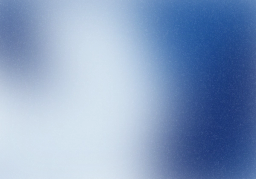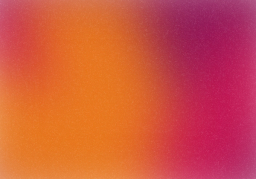Remote Job Interview Tips: 8 Virtual Success Strategies

Remote Job Interview Tips: 8 Virtual Success Strategies
Remote job interviews are now a key part of the hiring process. To succeed, you need to combine traditional skills with virtual know-how. Here's what you need to do:
- Set Up Your Space: Use a clean, professional background, good lighting, and clear audio. Position your camera at eye level.
- Dress Professionally: Wear business-appropriate clothing, even for virtual meetings.
- Master Your Tech: Test your video platform, microphone, and internet connection in advance.
- Engage Effectively: Research the company, ask thoughtful questions, and follow up with a thank-you email.
- Show Remote Skills: Highlight your experience with remote work tools and time management.
- Prepare for Issues: Have backup plans for technical problems, like alternative devices or internet options.
- Organize Your Space: Keep your workspace tidy and distraction-free.
- Practice: Use AI-powered mock interviews or practice with a friend to refine your approach.
Remote Job Interview Tips and Tricks
1. Set Up Your Video Interview Space
Creating a professional setup for your virtual interview is key to making a great first impression. In fact, 97% of recruiters say they prefer candidates who appear in a professional, office-like setting [2].
Choose a Clean Background
Your background plays a big role in how you're perceived. A tidy, well-thought-out backdrop shows professionalism. Bridget O'Rourke, a professional video producer, suggests:
"Have a section of your living room, office, or bedroom in the background to create a more inviting appeal." [2]
Here are a few tips for a polished background:
- Use a neutral wall with minimal distractions. Add simple touches like a neat bookshelf or a plant.
- Remove clutter or anything that could be seen as unprofessional.
- If your space isn’t ideal, consider a virtual background. Just make sure your lighting and camera quality complement it.
A clean and organized background enhances your overall presentation.
Optimize Lighting and Sound
Good lighting and clear audio are essential for effective communication. Try facing a window for natural light or use artificial lighting strategically placed around you.
"A best practice is to include a source of lighting in the background. This could be a lamp, a small window, portable lights, or LED light strips. This will help separate you from the background, especially if you're up against a wall. It also adds a nice extra visual cue for the interviewers." – Bridget O'Rourke [2]
For audio clarity:
- Test your microphone and consider headphones with a built-in mic to reduce echo and background noise.
- Choose a quiet space, away from household activity.
- If needed, hang blankets or sit in a closet to reduce echo.
With the right lighting and sound, you'll be seen and heard clearly.
Position Your Camera
Proper camera placement helps maintain natural eye contact, making you appear more engaged. Here’s how to set it up:
- Place your webcam slightly above eye level and about 2 feet away.
- Use books or a sturdy box to elevate your laptop if needed.
- Position the video window near your webcam to make eye contact feel natural.
- Clean your webcam and glasses for a sharp, clear image.
These small adjustments can make a big difference in how you come across during your interview.
2. Follow Video Call Best Practices
Wear Interview-Appropriate Clothing
What you wear during a video interview can shape the first impression you make. Studies show that 23% of employers prefer blue for its professional tone, while 25% find orange the least suitable [4].
- Business casual: Opt for a collared shirt or blouse in a solid color.
- Business professional: Men can add a tie, while women might choose a structured blazer.
- Always dress professionally from head to toe, even if only your upper half is visible on camera.
"Choose attire for your video interview that reflects your respect for the opportunity and aligns with the company culture and position you're applying for." - Spark Hire [5]
Use Effective Body Language
Body language plays a major role in how you're perceived, even on video. Jennifer Parris explains:
"Presenting confidence, friendliness, and positivity should be your aim in any interview, but how you convey that during a video interview is different than in person." [6]
Here’s how to project confidence:
- Eye contact: Look directly into the camera. A sticky note near it can serve as a helpful reminder.
- Posture: Sit up straight. A small pillow can provide extra back support.
- Engagement signals: Nod occasionally and smile naturally to create a welcoming vibe.
Keep hand movements minimal to avoid distractions. A confident and composed demeanor helps you focus on the technical aspects of the interview.
Remove Possible Interruptions
A distraction-free environment is key to staying focused. Here’s how to prepare:
- Digital cleanup: Close unnecessary browser tabs and apps to avoid notifications.
- Physical space: Arrange your surroundings to minimize disruptions.
- Internet connection: Use a wired connection if possible for better reliability.
- Environment control: Silence your phone and keep pets in another room.
If needed, use a virtual background or blur filter, but test it in advance to ensure it works smoothly. With a clean setup, you’re ready to focus on the interview and make a strong connection with the interviewer.
3. Master Interview Technology
Your technical setup can make or break a virtual interview. Preparing ahead ensures everything runs smoothly.
Get Comfortable with Your Video Platform
Avoid last-minute surprises by testing your video platform the day before:
- Test with a full call 24 hours in advance.
- Check that your microphone and camera are working properly.
- Use headphones to avoid echoes and improve sound quality.
Once you're confident with the platform, take it a step further by practicing with Canyon's mock interview simulations.
Practice with Canyon's Mock Interviews
Canyon offers AI-powered mock interviews to help you sharpen your virtual interview skills. Here's what you can expect:
- Intro Screen: Helps you make a strong first impression.
- Behavioral Questions: Guides you in structuring answers to soft-skill questions.
- Technical Questions: Tests your expertise for role-specific challenges.
The system provides feedback on how clear your communication is, how well your answers are structured, and your overall on-screen presence. This is a great way to spot areas for improvement.
While practicing, it's smart to have a plan in case something goes wrong during the actual interview.
Have Backup Options Ready
Prepare for potential technical hiccups by setting up these backups:
- Primary Connection: Use a wired ethernet connection and keep your device plugged in to avoid power issues.
- Backup Internet: Test a mobile hotspot as a backup option.
- Alternative Devices: Have a fully charged second device with the video platform already installed, just in case.
A little preparation can save you a lot of stress during your interview.
4. Connect with Interviewers Online
Once you've got your tech setup sorted, it's time to focus on building real connections with your interviewers.
Research the Company
Digging into the company's background helps you engage with confidence. Here's where to start:
- Company Website: Learn about their mission, values, and any recent updates.
- LinkedIn: Check out recent hires, promotions, and company posts.
- Financial Reports: For public companies, Crunchbase is a great place to find quarterly earnings.
- Social Media: Look at how they present themselves across platforms.
"You could call it the 'Great Reflection.' … It's critical to deliver value and purpose." - Caitlin Duffy, research director at Gartner [8]
Did you know? 43% of HR professionals say cultural fit is the top quality they look for in candidates [9]. Use this to your advantage by aligning your responses with the company's values.
Use your research to craft sharp, meaningful questions.
Ask Thoughtful Questions
Here are a few examples:
- Team Dynamics: "How does the team stay connected and collaborate effectively in a remote setting?"
- Performance Metrics: "What criteria will be used to measure success in this role?"
- Professional Growth: "What resources or programs does the company offer to help remote employees develop their skills?"
- Company Culture: "What kinds of virtual team-building activities are in place?"
"It's a common misconception that if you're working remotely, you get to pick and choose your own hours - and it's quite the opposite." - Ashlee Anderson, certified professional career coach at Work From Home Happiness [10]
Follow Up After the Interview
Wrap things up by sending a thank-you email within 24 hours. Here's a simple structure:
- Subject: "Thank you for your time - [Position] Interview"
- Opening: Mention key points from your conversation.
- Body: Connect your skills to what the company needs.
- Closing: Reaffirm your interest and ask about next steps.
"A great thank-you note ties together how you are the perfect candidate for the role and as a future colleague." - Lauren Van Duyn, Recruitment Manager, Workhuman [11]
5. Present Remote Work Abilities
Showcasing your remote work experience can strengthen your case for virtual roles. Pairing this with your technical readiness ensures you're well-prepared for remote opportunities.
Share Past Remote Work
Highlight your remote work experience with measurable outcomes, such as:
- Completed remote projects
- Collaborations with distributed teams
- Effective communication strategies
- Improved workflows and processes
Focus on achievements that demonstrate your ability to work independently and take initiative. This complements your technical setup and reinforces your readiness for remote roles.
Show Organization Skills
Demonstrate your ability to stay organized and efficient while working remotely.
Time Management
- Use daily schedules and prioritization systems to stay on track.
- Coordinate meetings across different time zones.
- Implement task tracking methods to ensure deadlines are met.
"Those who have worked remotely know that even traditional office environments can be highly distracting." - Rachel Meda
Communication Practices
- Conduct regular team check-ins to maintain alignment.
- Keep thorough documentation of processes and updates.
- Share status updates consistently.
- Use virtual collaboration tools effectively.
List Your Work Tools
Proficiency with remote work tools is essential. Highlight your experience with:
Video Conferencing
Zoom, Microsoft Teams, Google Meet
Project Management
File Sharing
Google Drive, OneDrive
Team Communication
Slack, Microsoft Teams
Productivity Tools
Canyon's resume builder, job tracking
When discussing these tools, focus on how you've used them to achieve results. For example, mention leading virtual meetings, managing deliverables, or keeping teams aligned. If you've used Canyon's tools, share how they supported your professional growth.
Be ready to adapt to new software, as different organizations may use different platforms. Your ability to quickly learn and apply new tools will showcase your value in a remote environment. These skills will help you confidently handle other aspects of your remote interview.
6. Manage Technical Problems
Technical issues during virtual interviews can disrupt your performance, but with some preparation, you can avoid most problems. Here's how to handle them like a pro.
Keep Contact Information Handy
Always have backup contact details ready. When confirming your interview, ask for the interviewer's direct phone number and email address. Keep this information within reach in case you need it.
Phone Number
For video or audio disruptions
Email Address
For rescheduling or follow-ups
Handle Issues Calmly
Facing technical glitches? Stay composed - it shows you're resourceful and professional [12]. Here's what to do:
- Stay calm and acknowledge the issue right away.
- Briefly explain what's happening.
- Offer a solution, like switching to a phone call.
- Thank the interviewer for their understanding.
After resolving the issue, take a moment to double-check your setup to avoid further interruptions.
Test for Common Problems
Before the interview, run through this quick technical checklist:
- Internet Connection: Test your speed (aim for at least 4 Mbps upload/download) [13]. Have a backup plan if your connection falters.
- Audio/Video Setup: Make sure your audio is clear, your video is well-lit, and your camera is positioned correctly. Using headphones can help eliminate echo.
- Platform Readiness: Familiarize yourself with the platform, including basic troubleshooting and screen-sharing features if needed. Close any unnecessary apps to optimize performance.
A little preparation goes a long way in ensuring a smooth interview experience.
7. Organize Your Interview Space
Setting up a tidy and professional space can make a big difference in how you're perceived during a virtual interview. Beyond having a good background and proper lighting, organizing your workspace and materials shows you're prepared and focused.
Clean Your Workspace
Your surroundings can say a lot about your professionalism. Here's how to ensure your space is interview-ready:
Background Setup
- Sit in front of a plain wall with minimal decor.
- Remove anything distracting.
- A framed picture or neat shelving can add a nice touch.
Lighting
- Use natural light or a ring light for even lighting.
- Avoid backlighting that creates shadows.
- Test your lighting setup ahead of time.
Space Organization
- Clear any clutter visible on camera.
- Keep personal items out of sight.
- Ensure everything in view looks professional.
"When attending a virtual interview, your background speaks volumes. Choose a well-lit, quiet, and clutter-free environment. This not only showcases professionalism but ensures you're seen and heard clearly."
- Savvina Drougouti, Hiring World's Top 1% Talent | Web3 & Blockchain Recruitment [1]
"Make sure there isn't anything unprofessional in the background. Dirty laundry or empty wine bottles send the wrong signal."
- Toni Rhorer, director of career management at W. P. Carey [14]
Once your space is set up, make sure you have everything you need to avoid interruptions during the interview.
Gather Required Items
Having the right tools at hand helps you stay focused and avoid scrambling mid-interview. Keep these items nearby:
- Interview Materials:
Printed resume, notepad, pen, company research notes, and prepared questions. - Technical Equipment:
Headphones or earbuds, charging cables, a water bottle, and tissues. - Digital Setup:
Close unnecessary tabs, mute notifications, silence your phone, and have important documents ready to share.
Choose a quiet room where you can close the door to avoid interruptions. Keep everything within reach but out of the camera's view. A well-organized space not only helps you stay calm but also leaves a strong impression of professionalism.
8. Final Steps for Interview Day
Get ready to ace your remote interview with these final steps to ensure you're fully prepared.
Review Key Tasks
Before the interview, double-check this checklist to stay on track:
60 minutes before
- Test your internet connection
- Close any unnecessary apps or tabs
- Check your camera and microphone
30 minutes before
- Adjust lighting and tidy up your background
- Review your notes and materials
- Keep reference documents within reach
10 minutes before
- Log into the video platform
- Double-check audio and video settings
- Turn on "do not disturb" mode
After confirming your setup, consider using Canyon's tools for a last-minute practice session.
"Preparation and enthusiasm are key for virtual interviewing!" - Rebecca Andersen, Author [3]
Try Canyon for Practice
Canyon's AI-powered mock interviews can help you fine-tune both your technical setup and your presentation skills [7].
Related Articles





